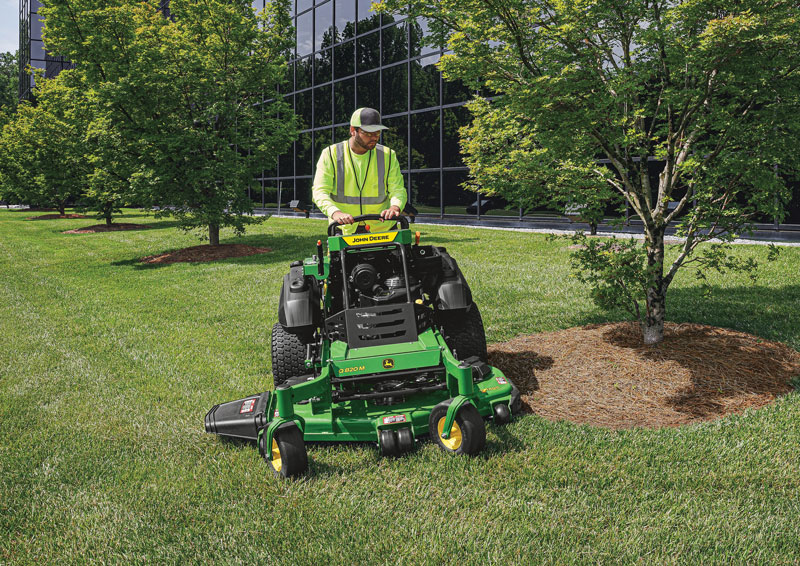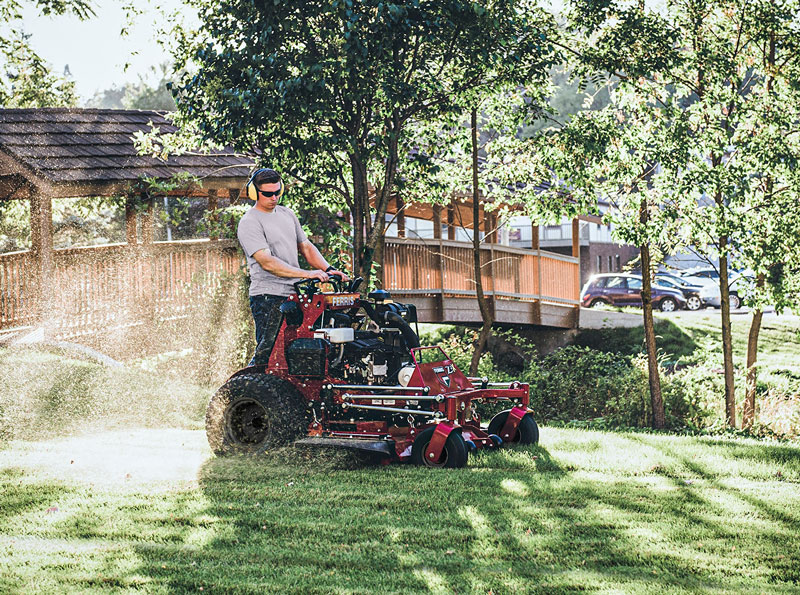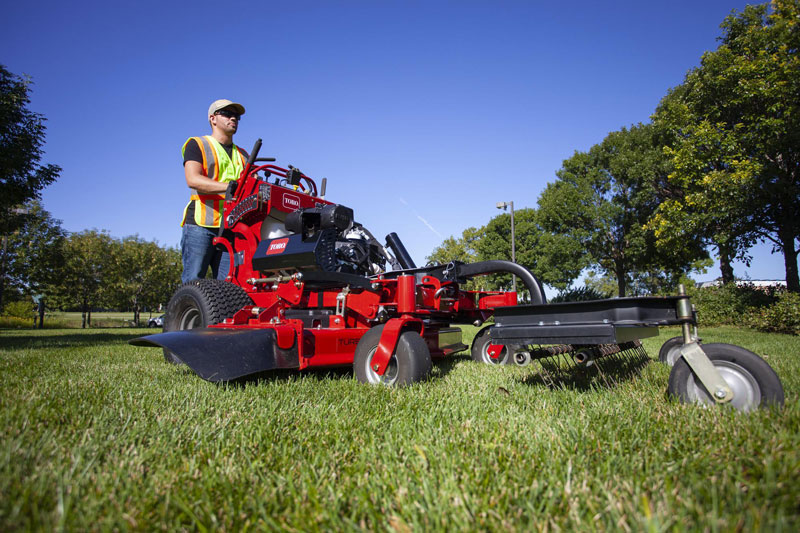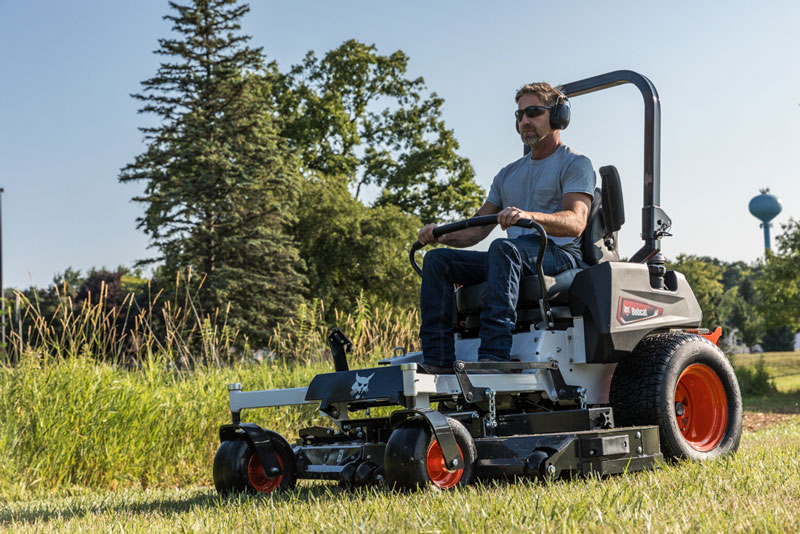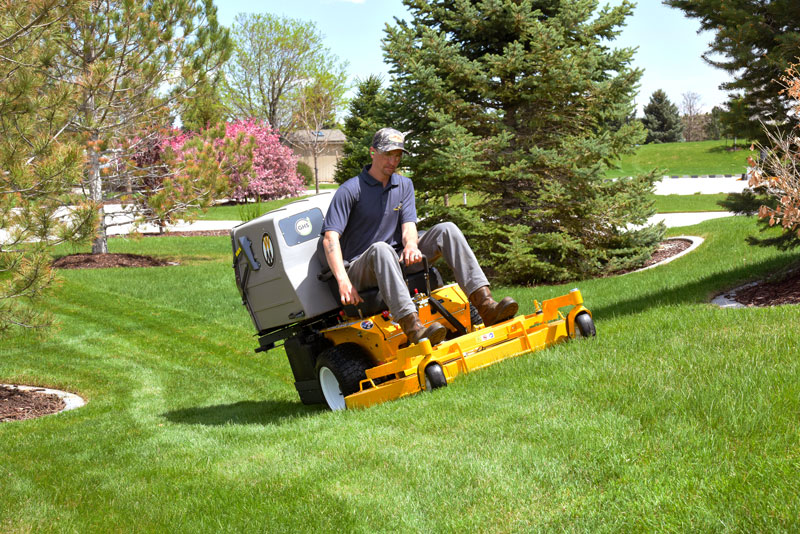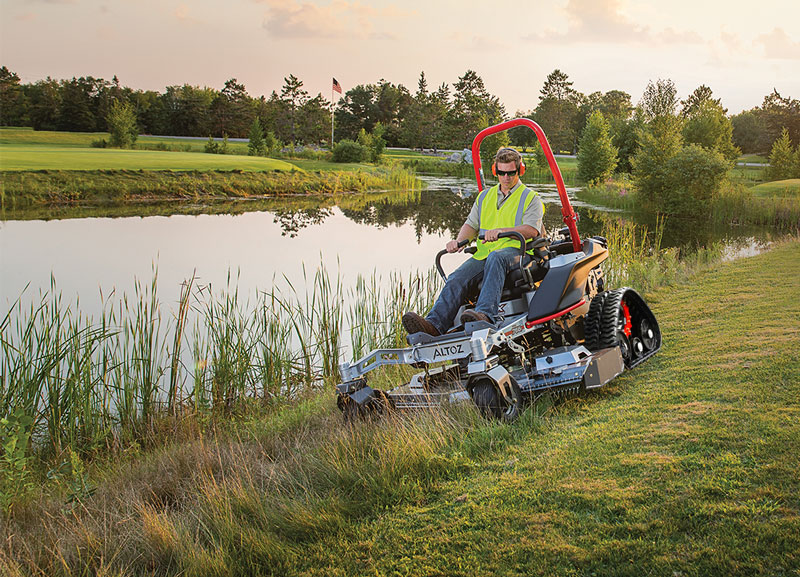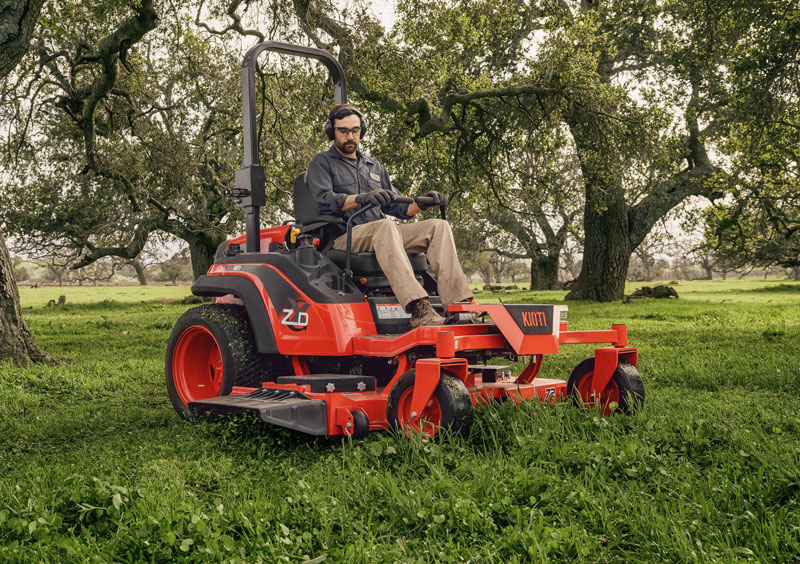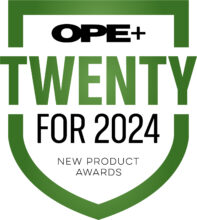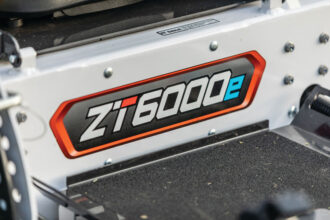Trends in Commercial Mowers
We cover ergonomics, technology, price and design
The commercial mower marketplace is an expanding collection of products and price points — that is, if we can even define a “commercial” mower today. Most OEMs define it by who is using the mower and where. We spoke with several manufacturers to learn what they’re focusing on in four main areas — ergonomics, price, design and technology — to serve pro users.
Ergonomics
A long-running product trend, stand-on mowers continue to gain popularity in this market. That is due to ergonomics. From 1997, when Bill Wright created what is now the Wright “Stander” line to today’s broad mix of sizes and prices, stand-on mowers are the “it” product.
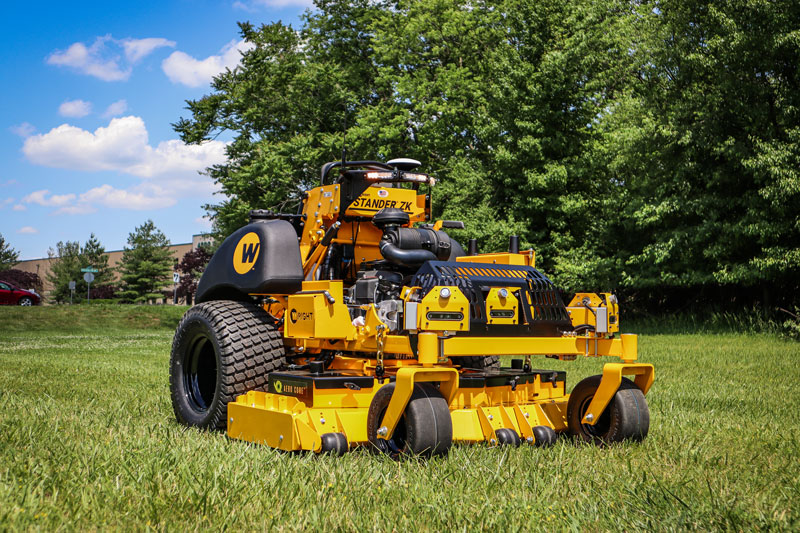
“Yes, that product line has been growing for many years now,” said Ron Scheffler, senior product manager for turf vehicles at Bobcat. “Currently, stand-ons make up about 16 to 18 percent of the commercial market.”
“Stand-on mowers are getting a lot more attention,” said Maureen McCormack, marketing manager for John Deere. “And they can be just as productive as a sit-on zero-turn mower. Operators appreciate getting on and off the machine faster to move debris or to load a trailer.”
Scheffler agrees, saying that stand-on mowers are gaining market share because they offer more efficiency, better handling in smaller spaces, they fit better on a trailer and they are generally less expensive. The trend, then, might be more about gains in efficiency and productivity from the ergonomics shift than about a certain style of product.
“Our customers are looking more and more for productivity gains,” said McCormack. “And how quickly they can complete service tasks. Ergonomics and comfort are a big part of the design focus with our updates to the QuikTrak mowers.” She said that Deere also looks at parts commonality. “Fewer belts, wheels and other parts that dealers need to keep in stock. This saves dealers time and money.”
Stand-on mowers are the fastest growing market by percentage, but there is just so much more volume in sit downs, according to several of the people with whom we spoke.
“People have different habits and different use patterns,” said Lenny Mangnall, Exmark product manager. “We have to build mowers that are the best piece of equipment for every type of property — from sit-on wing-deck mowers to walk-behinds to stand-ons that can maneuver in tight areas.” Ergonomic design for comfort across use patterns is an ongoing trend for Exmark.
See our Equipment Focus feature on the latest mowers across the marketplace.
Ferris agrees. “From a comfort and user experience standpoint, true suspension is a game-changer for an operator who is on the mower for several hours each day,” said Christin Wam, senior director of marketing for Ferris Mowers. “By focusing on suspension, we can help Ferris users feel good at the end of a long workday so they can be ready for the next day.”
Kioti sees the increasing value operators place on comfort, and the company makes ergonomics a focus on its mowers. “Our controls are within arm’s reach and there is ample adjustability between our seat and drive levers, allowing operators to set up a machine how they prefer,” said Steven Benedict, Kioti product manager.
“It’s all about user experience these days, especially with a labor shortage. We looked at that, and we put the operator and user experience top of mind,” said Scheffler.
The trending labor shortage is on Toro’s mind as well. “We’re making big movements on efficiency, especially for durability and serviceability. It’s hard for pro users to find people, so ease of service is vital,” said Jared Nuessen, Toro senior marketing manager for the residential and contractor division.
Price
“There are always price-is-no-object folks,” said Scheffler. “But with economic uncertainty, higher interest rates and the upcoming election, we see a trend to people watching their spending.”
That helped justify Bobcat’s ZT5000, the mower it introduced late last year. “This is a pure commercial mower at the lowest price point we’ve offered. We hear from dealers that people are doing more servicing than buying new. People are more cautious.”
Exmark refers to that caution as “intention.” Said Mangnall, “We’re seeing customers act much more intentionally with their purchases. If they always bought the same thing before or spent the same , we see people thinking twice today. Whether that means scaling back to a smaller machine or going bigger with more features to serve a labor shortage.”
Mangnall added that he wants to help users work more efficiently. Exmark’s Tractus airless tires are an expensive add-on, he admitted, but can help a contractor save time and money down the road. “People may think tire repairs are an easy and inexpensive thing, but over time they’re not. It’s downtime and repeat maintenance.” Even just low air pressure, he said, can impact performance and efficiency. Some John Deere mowers are available with Michelin’s airless Tweel as well.
Wright also sees a trend toward helping pro users see costs wholistically. “The price paid at the dealership is just one of the many expenses users face when operating equipment,” said Jake Sergin, Wright’s business development manager. “Every time a user replaces a belt, gets a flat tire or drives to a dealership, money is leaving their pocket.”
He said that Wright designs both its Stander and Rider models “from the ground up with the mower’s life cycle cost as our foundation. That means users spend less time and money fixing lawn mowers and more time cutting grass and building their business.”
Ferris recognizes the price-conscious trend and has added models recently at entry-level price points. “These lower-priced units — Ferris 300s and 500s — offer commercially inspired features, but are more accessible to a wider range of buyers,” said Wam.
Walker’s Tim Cromley said similar, pointing to the company’s new Model R residential mower that dealers can price around $6,000.
Technology
When we asked manufacturers about “technology” trends in mowers, we were thinking more about batteries and automation. But it’s broader than that for many of these companies. Manufacturers including Toro, Walker and Exmark mentioned electronic fuel injection as a technology trend it sees users requesting.
“Everybody is looking for horsepower now,” said Nuessen. “But if you have a good high-quality cutting deck, and an efficient engine with EFI, you might not need the most horsepower.”
Brands give names to technology features in hopes they’ll catch on as trends. That’s true across the board —from Exmark’s Adapt technology (for setting deck pitch) to Ferris’s new iCD+ cutting system to Walker’s TOPS fluid-circulating system.
Other manufacturers go against trends — which could be a trend in itself. “The buzz right now is electronics, whether battery or remote or autonomous,” said Karl Bjorkman, V.P. of sales at Altoz. “We’re not going that direction right now. We are focusing on differentiation of gas models. Our lineup is 50% tracked units. We help people cut in areas other machines can’t, such as around water-retention ponds and levees, with accessory deck wings to even get out over the water.”
In the same way, Walker touts its out-front design. “It’s not common in the industry, but the deck position sitting in front of the operator gives a better field of view,” said Cromley. He added that the improved trimming capabilities of the out-front design translate into improved job times over using a string trimmer.
But getting to our definition of “technology,” the industrywide trend toward battery power and automation is here.
“We are really excited about the continued improvements with our Stander ZK Autonomous mower,” said Segrin. “This spring our partners at Greenzie launched the 3.0 software update to all machines, which brought some added productivity to our customers. The future is most definitely here now with commercial cutters at large national account type outfits, small landscape companies and municipal customers embracing the autonomous mower technology.”
Greenzie technology is on other commercial mowers as well. Bobcat made a “strategic investment” in Greenzie. The technology is available on mowers from Scag and Mean Green as well. Scythe and RC Mowers also offer autonomous technology for mowers, boosting the work capabilities for contractors willing to make the investment. Greenzie features an ROI calculator on its website, working to get potential buyers to see the opportunity in the cost. The cost for an autonomous Wright Stander is more than double a manually operated machine.
Some say the automation and battery power trends are not trendy enough yet — at least on the commercial side.
“We have a residential ZTR with battery power,” said Deere’s McCormack. “But across the industry, the adoption will take time. The battery-charging infrastructure is a concern. Commercial buyers have a lot to think about.”
She added that Deere is ready for battery adoption and is waiting for the industry. “We’re watching the regulations in municipal areas and on college campuses.”
Design
Manufacturers noted the importance of design and style as well. During Equip Expo, Toro stated that consumers are demanding zero-turn mowers with more aggressive styling, and ATV-type visual appeal.
Kioti styles its mowers for both functionality and a rugged look. “We emphasize good sight lines to critical mowing areas,” said Benedict. “Customers can see how sturdy our machines are with heavy-duty welded frames and reinforced fabricated decks.”
According to Bobcat, people want more style. “Years ago, these were boxy, with an old-school, farm-equipment look,” said Scheffler. “Today, people are looking for products that look robust and durable, but also look like they’re in motion.”
Who decides the trends?
We often ask manufacturers, “Who decides these trends? Are you listening to users or designing what you want?” Most manufacturers with whom we spoke talked about listening — whether through research data or user groups or dealer panels.
“We take product out in the field to get VOC (voice of customers) in varied conditions and markets nationwide,” Scheffler said about how Bobcat discovers trends. “We take some of the competitive units too to find out what people like. Sometimes it’s roundtable discussions, and a lot of field work. And ranges of people, sizes and shapes and opinions.”
In case you’re wondering where trends come from.

